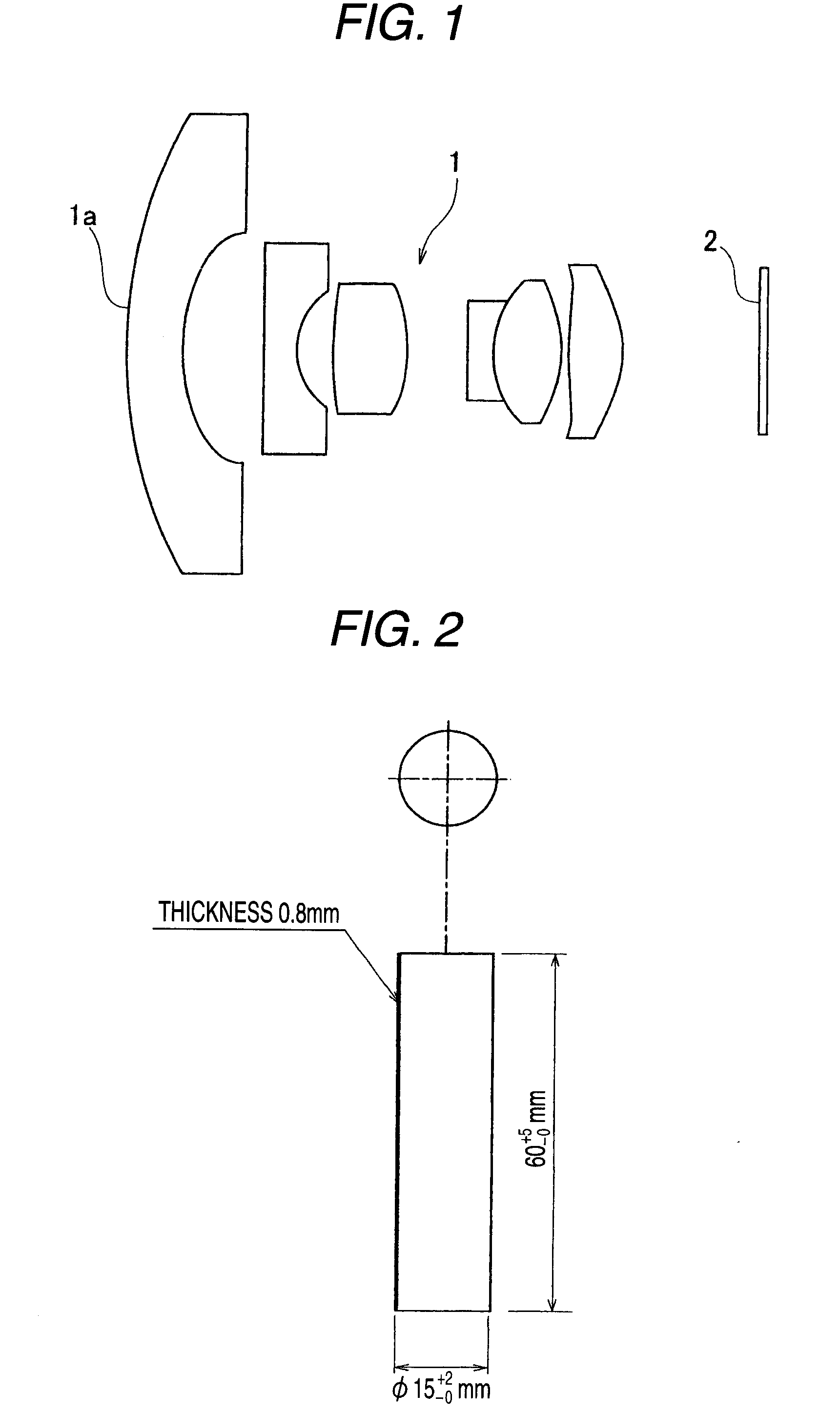On-vehicle camera lens glass material and on-vehicle camera lens
a technology for camera lenses and glass materials, which is applied in the field of on-vehicle camera lens glass materials and on-vehicle camera lenses, can solve the problems of difficult to configure an imaging lens suitable, lens damage or eroded, and concern about lens surface deterioration and metamorphosis, and achieve excellent environmental resistance, scratch resistance, and chemical durability. excellent
- Summary
- Abstract
- Description
- Claims
- Application Information
AI Technical Summary
Benefits of technology
Problems solved by technology
Method used
Image
Examples
examples
[0230]Hereinafter, examples of the invention will be described.
examples 1 to 5
and a comparative example of the on-vehicle camera lens glass material according to the invention are provided by the inventors as shown in the following Table 1.
[0231]
TABLE 1ComparativeExample 1Example 2Example 3Example 4Example 5ExampleSiO230.07.07.07.043.05.0B2O32.010.013.08.03.024.0Li2O1.00.00.00.08.00.0CaO26.00.03.00.018.00.0BaO0.00.011.015.00.00.0ZnO0.05.04.01.00.023.0La2O33.041.038.034.03.038.0Gd2O30.010.00.00.00.00.0Y2O30.04.00.00.00.00.0ZrO210.06.06.07.08.04.0Nb2O519.02.05.08.07.06.0Ta2O50.015.00.00.00.00.0TiO29.00.013.020.010.00.0SiO2 + ZrO240.013.013.014.051.09.0Nb2O5 + TiO228.02.018.028.017.06.0Nb2O5 + TiO2 + Ta2O528.017.018.028.017.06.0nd1.8071.8851.8052.0001.7021.786νd33.040.731.325.440.043.9specific3.55.44.64.72.94.4gravityα (×10−7 ° C.−1)886088879871DW0.01% (1)0.01% (1)0.02% (1)0.01% (1)0.02% (1)0.02% (1)DA0.02% (1)0.10% (1)0.15% (1)0.02% (1)0.03% (1)0.47% (3)Hk 685 (7) 730 (7) 630 (6) 600 (6) 670 (7) 690 (7)solarization0.8%0.5%0.8%0.8%0.8%0.5%(α: average linear expa...
PUM
| Property | Measurement | Unit |
|---|---|---|
| refractive index | aaaaa | aaaaa |
| refractive index | aaaaa | aaaaa |
| refractive index | aaaaa | aaaaa |
Abstract
Description
Claims
Application Information
 Login to View More
Login to View More - R&D
- Intellectual Property
- Life Sciences
- Materials
- Tech Scout
- Unparalleled Data Quality
- Higher Quality Content
- 60% Fewer Hallucinations
Browse by: Latest US Patents, China's latest patents, Technical Efficacy Thesaurus, Application Domain, Technology Topic, Popular Technical Reports.
© 2025 PatSnap. All rights reserved.Legal|Privacy policy|Modern Slavery Act Transparency Statement|Sitemap|About US| Contact US: help@patsnap.com


